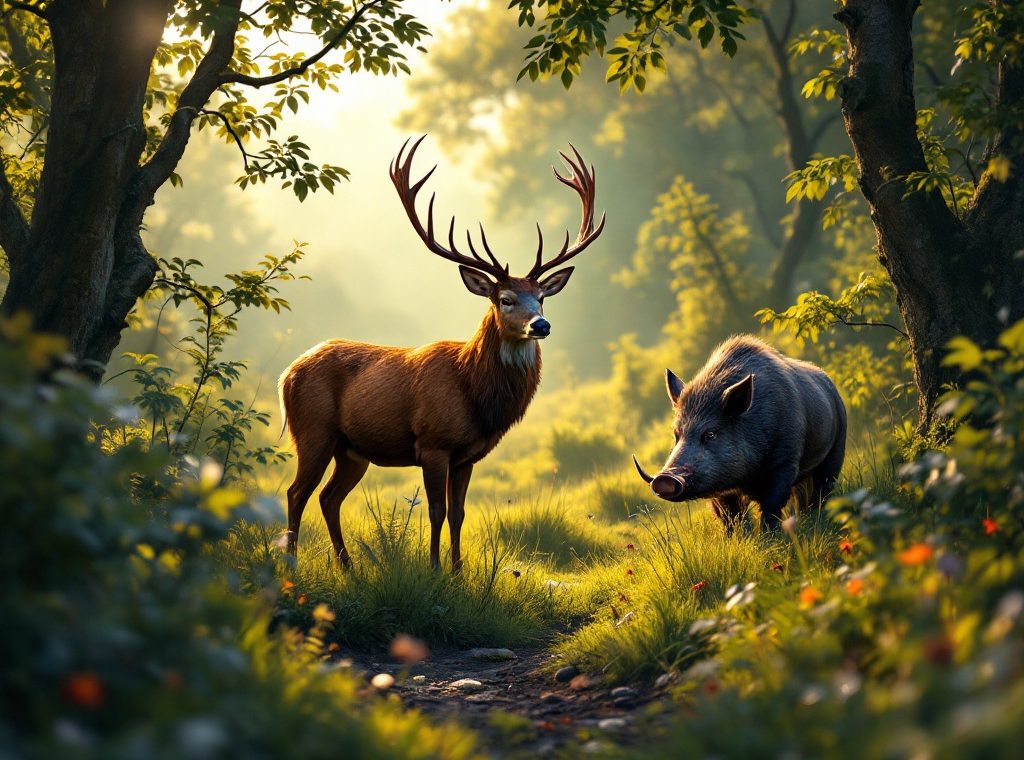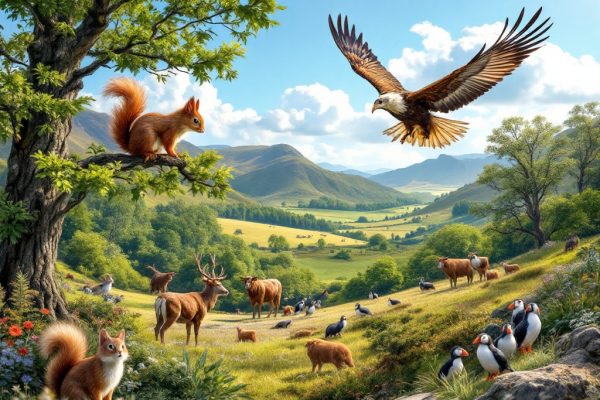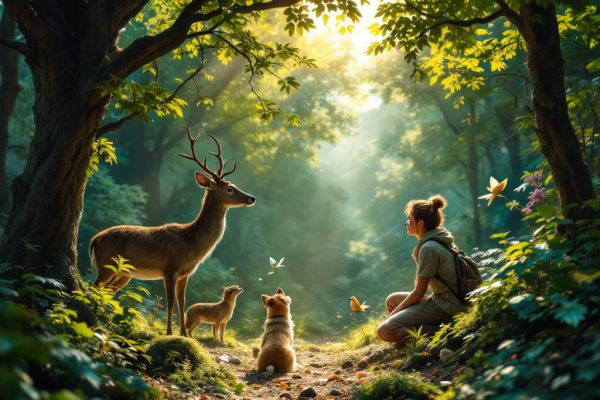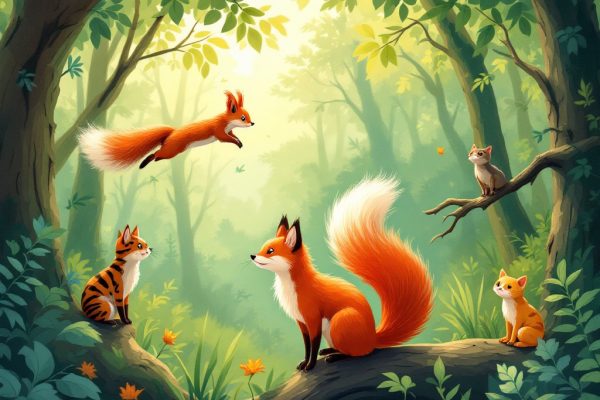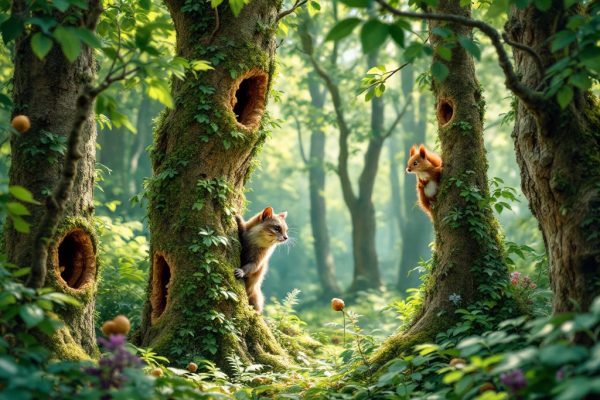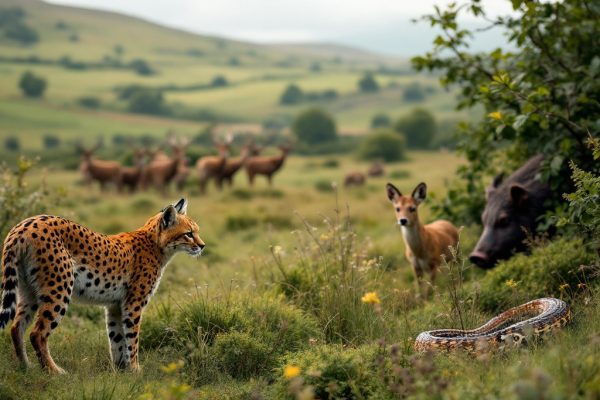Scary Wild Animals in Lothian: What Travelers Whould Know
Explore the wild side of Lothian! Discover the majestic red deer and powerful wild boar, but tread carefully, especially during mating season. While the elusive adder and common ticks present real dangers, it’s often domesticated dogs that pose the greatest threat. Learn how to identify dangerous animals, understand their behaviors, and stay safe in Lothian’s natural beauty. Read on to ensure your wildlife encounters are memorable for the right reasons.
Important information

- Red deer stags are aggressive during mating season (September-November). Keep your distance.
- Wild boar, with sharp tusks, are dangerous if threatened, especially mothers protecting young.
- Adders are Scotland’s only venomous snakes. Be cautious in their habitats, but bites are rare.
- Ticks carry Lyme disease. Check yourself and pets after being outdoors. Watch for a “bullseye” rash, fever, or headache.
- Keep dogs on leashes to protect them and prevent disturbing wildlife.
Understanding Scary Wild Animals in Lothian
Lothian is home to a variety of wildlife, some of which can be quite imposing. Red deer, known for their size and strength, can become particularly aggressive during mating season. Wild boar, equally robust and possessing sharp tusks, also roam the region and demand respect. Overhead, eagles and buzzards circle, sometimes appearing menacing, especially when nesting. While most animals will avoid humans, caution is always advisable. Staying aware of your surroundings is crucial for a safe and enjoyable experience.
What Makes an Animal Dangerous?
An animal’s danger level depends on several factors. These include predatory instincts, venom, size, strength, and the ability to transmit diseases. Aggressive behavior, such as protecting their territory or young, can also make animals significantly more dangerous. The situation itself plays a key role, too. A startled or trapped animal is more prone to attack. A calm animal in its natural habitat may present minimal danger.
Common Misconceptions About Scottish Wildlife
Contrary to popular belief, Scotland’s most dangerous wildlife isn’t its wild animals, but rather, domesticated dogs. Their aggression poses a real threat to both visitors and residents.
While deer may seem harmless, they are a major cause of road accidents. Male red deer, especially during mating season, can be aggressive, so caution is advised.
Identifying Dangerous Wild Animals in Lothian
Scotland’s elusive adder, while rarely seen, possesses a venomous bite. This poses a risk, particularly to children, the elderly, and pets. These snakes favor open landscapes like heathland, moorland, and coastal dunes.Ticks, carriers of Lyme disease, flourish in Lothian’s grassy and wooded regions. It’s crucial to check yourself and your pets for ticks after spending time outdoors. Lyme disease manifests in symptoms such as fever, headache, fatigue, and a distinctive “bullseye” rash known as erythema migrans.Red deer stags become aggressive during their mating season, which runs from September to November. Maintaining a safe distance is essential, especially during the rut.While not native to Scotland, wild boar have established a presence. Powerful and equipped with sharp tusks, these animals can be dangerous if they feel threatened. This is especially true for mothers safeguarding their young.Other wildlife, including badgers and foxes, are typically harmless. However, it’s wise to observe them from a distance. Refrain from approaching or feeding any wild animals.
The Adder: Scotland’s Only Venomous Snake
Scotland’s only venomous snake, the adder (*Vipera berus*), prefers habitats such as heathland, woodland, and moorland. While encounters are uncommon, caution is advised in these areas. Adders are generally shy, so bites are infrequent, but it’s important to be aware of their presence.
Ticks and the Risk of Lyme Disease
Lyme disease is a bacterial infection transmitted through tick bites. To protect yourself, wear long pants and use insect repellent, especially in grassy or wooded areas. Always check for ticks after being outdoors, regardless of location, to ensure early detection.
Red Deer: Aggressive Behavior During Mating Season
As autumn arrives, male red deer transform into formidable rivals, fiercely competing for the attention of female deer (hinds). These stags aggressively defend their harems, so it’s crucial for travelers to maintain a safe distance, especially during the vulnerable hours of dawn and dusk.
Wild Boar and Their Potential for Injury
Wild boars are dangerous due to their sharp tusks. They often charge when threatened, especially when protecting their young or during mating season. For your safety, maintain a safe distance and never approach them, particularly in their territory.
Other Notable Wildlife: Badgers, Foxes, and More
Lothian boasts a diverse range of wildlife, including badgers, foxes, golden eagles, and buzzards. While these animals are generally not dangerous, caution is always recommended. Red deer, for instance, can exhibit aggressive behavior during mating season. Similarly, badgers and foxes, though not as large as wild boar, can pose a threat if they feel cornered or threatened. Understanding their behavior and respecting their space is crucial for safe encounters, particularly in areas like the Pentland Hills and surrounding forests. Familiarizing yourself with local wildlife patterns will further enhance your safety.
Wildlife Safety Tips
- Respect wildlife habitats: observe animals from a safe distance and avoid approaching or disturbing them, especially during sensitive periods like mating or nesting seasons.
- Be mindful of your surroundings: make noise while hiking to avoid startling animals and be extra cautious at dawn and dusk when many animals are most active.
- Store food properly: keep food securely stored away to avoid attracting wildlife, and never intentionally feed them.
Understanding Animal Behavior
- Red deer: exercise extreme caution during mating season, as stags can become aggressive. Keep a safe distance and never approach them.
- Badgers and foxes: while generally not aggressive, these animals will defend themselves if cornered or threatened. Avoid approaching them, especially if they have young nearby.
- Birds of prey: admire these majestic birds from afar. Do not disturb their nests or attempt to get too close.
Safety Tips for Travelers in Lothian
Respect wildlife by maintaining a safe distance and never approaching or feeding them, especially during breeding seasons. If confronted by an animal, slowly back away without making sudden movements. Keep pets leashed to prevent them from provoking wildlife. Familiarize yourself with local animal habits.
Leashing your dog near wildlife protects both your pet and the animals. Off-leash dogs can disturb wildlife, creating potentially dangerous situations. A leash prevents these unwanted interactions and ensures your dog’s safety.
Stick to marked paths and trails, avoiding dense underbrush and areas where animals nest or breed. Observe wildlife from a distance using binoculars or zoom lenses. Minimize noise and avoid sudden movements that could startle them.
Dispose of trash properly in designated bins. Never leave food or other attractants exposed, as this can lure animals into human areas, creating conflicts and risks. Securely store food and scented items when camping or picnicking.
What to Do in Case of Wildlife Encounters
If you encounter wildlife in Lothian, remain calm and avoid sudden movements. Slowly retreat while keeping the animal in sight, but don’t approach it, offer it food, or provoke it in any way. Always ensure the animal has a clear escape path.
Keep Dogs on Leads Near Wildlife
Dog leashes provide crucial protection for both your pet and the wildlife they may encounter. They prevent potentially dangerous interactions with wild animals such as deer, foxes, and badgers, which are common in many areas. An unleashed dog may provoke these animals, leading to a defensive response that could harm your pet. Therefore, using a leash is a straightforward way to safeguard the well-being of both your dog and the wildlife around them.
Respect Wildlife Habitats and Avoid Disturbance
Respect wildlife by keeping a safe distance and never feeding them. This protects both you and the animals, preventing disruptions to their natural behaviors and potential danger. Stay on marked trails and avoid dense vegetation to minimize habitat disturbance and avoid surprising animals. Always properly store food and dispose of waste to prevent attracting wildlife and maintain a clean environment.
Keep a Safe Distance: Observe animals from a distance to avoid disturbing them and ensure your safety.
Never Feed Wildlife: Feeding animals can alter their natural behaviors, create dependence on humans, and lead to dangerous interactions.
Stay on Marked Trails: Reduce your impact on the environment and minimize the risk of encountering wildlife by staying on designated paths.
Avoid Dense Vegetation: Minimize habitat disturbance and avoid surprising animals by staying clear of thick vegetation.
Proper Food and Waste Management: Store food securely and dispose of waste properly to prevent attracting animals and keep the environment clean.
Avoid Littering to Protect Wildlife
Discarded trash poses numerous threats to wildlife. For example, ingested plastic can injure animals internally and lead to starvation. Discarded fishing lines also present a serious entanglement risk to birds and marine life. Accumulated debris degrades habitats, disrupting the delicate balance of the ecosystem. Proper waste disposal is crucial for protecting Lothian’s wildlife and preserving a healthy environment.

